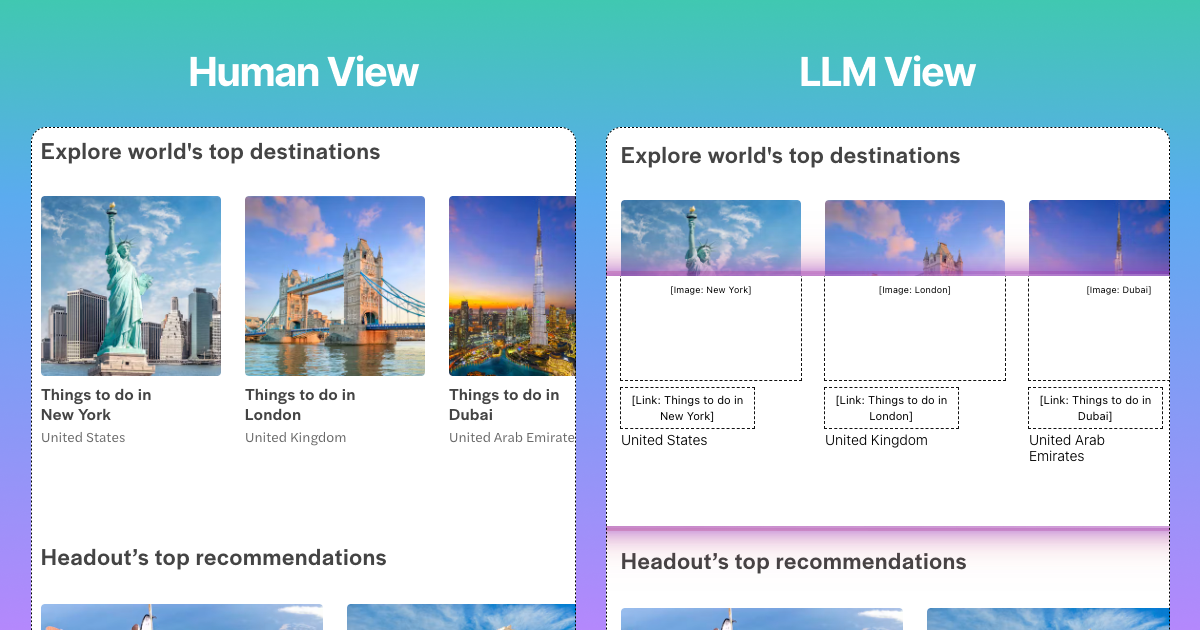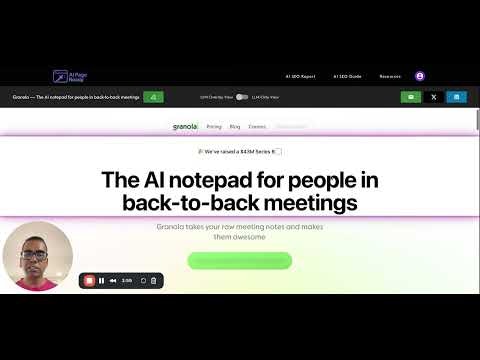
Table of Contents
Overview
In today’s rapidly evolving digital landscape, optimizing your website for both human users and artificial intelligence systems has become essential for online visibility. Research indicates that 58.5% of US Google searches now result in zero clicks to external websites, while AI-powered search platforms are experiencing unprecedented growth. This specialized AI visibility platform provides critical insights into how Large Language Models such as ChatGPT, Gemini, and Claude interpret and process your website content.
The platform addresses a fundamental challenge in modern SEO: while traditional tools focus on human-centric optimization, this solution specifically targets AI comprehension. Studies show that AI crawlers like GPTBot cannot execute JavaScript, meaning dynamic content remains invisible to these systems. By identifying JavaScript-hidden content, missing accessibility markers, and structural issues that impair AI understanding, this tool helps bridge the gap between traditional web development practices and AI-optimized content delivery.
Key Features
This comprehensive platform offers evidence-based features designed to enhance your website’s AI compatibility:
- AI Visibility Auditing: Provides detailed analysis of how multiple LLM systems interpret your website structure and content, based on actual AI model behavior patterns documented in recent research.
- JavaScript-Rendered Content Detection: Identifies client-side rendered elements that remain invisible to AI crawlers, a critical issue since most AI systems process only initial HTML without executing scripts.
- Alt Text and ARIA Label Analysis: Evaluates accessibility markers essential for both assistive technologies and AI content interpretation, addressing the documented gap where images without alt text appear as “Image: No Alt” to AI systems.
- Semantic Structure Evaluation: Assesses HTML semantic hierarchy using established web standards, ensuring content organization aligns with how LLMs process and categorize information.
- AI Model Content Perception Scoring: Delivers quantitative metrics showing content visibility across different AI platforms, enabling data-driven optimization decisions.
- Actionable Optimization Reports: Generates specific, implementable recommendations based on current AI processing limitations and best practices derived from industry research.
How It Works
The platform employs advanced crawling technology that simulates actual AI model processing behaviors. Unlike traditional SEO tools that focus on search engine algorithms, this system replicates the content interpretation methods used by leading LLMs. The crawling process identifies several critical issues:
Content Rendering Analysis: The system detects JavaScript-dependent content that AI models cannot access, addressing the fact that tools like ChatGPT’s browsing feature only process initial HTML responses.
Structural Assessment: Evaluates semantic HTML markup, heading hierarchies, and content organization patterns that influence AI comprehension and content extraction.
Accessibility Integration: Analyzes WCAG compliance elements that directly impact AI content interpretation, since many accessibility features serve dual purposes for both assistive technologies and AI systems.
Metadata Evaluation: Reviews structured data, meta tags, and other machine-readable elements that AI models use for content understanding and categorization.
Use Cases
The platform addresses multiple optimization scenarios critical for modern digital strategy:
- AI Search Optimization: Enhance content discoverability for AI-powered search platforms that increasingly influence user behavior, with 67% of SEO experts believing AI automation provides key benefits.
- LLM Content Accessibility Audits: Ensure content compatibility with AI systems that process information differently than traditional search engines, preventing content gaps in AI-generated responses.
- Technical SEO Enhancement: Address AI-specific technical issues that traditional SEO tools may overlook, particularly JavaScript rendering problems that affect AI content access.
- Future-Proofing Strategy: Prepare for continued AI integration in search and discovery, as market projections indicate AI search engines will reach \$108.88 billion by 2032.
- Competitive Analysis: Understand how AI systems perceive competitor content, enabling strategic positioning in AI-generated recommendations and summaries.
- Content Strategy Development: Align content creation with AI processing capabilities, ensuring information reaches audiences through both traditional and AI-mediated channels.
Competitive Analysis
This AI visibility platform occupies a unique position in the SEO tool ecosystem:
ContentKing Comparison: While ContentKing excels in real-time technical SEO monitoring and change tracking, it lacks specialized AI model simulation capabilities. ContentKing provides comprehensive traditional SEO auditing but does not specifically address AI content interpretation challenges.
Screaming Frog Comparison: Screaming Frog offers detailed crawl data and technical analysis but focuses on traditional SEO metrics rather than AI-specific content processing. The tool provides extensive crawl information but cannot simulate how AI models actually interpret and categorize content.
ChatGPT SEO Plugin Comparison: Available ChatGPT plugins serve specific content optimization functions but lack comprehensive site-wide analysis capabilities. These tools help with individual content pieces but cannot provide the systematic AI visibility auditing that dedicated platforms offer.
Implementation Considerations
Technical Requirements: Organizations should ensure proper structured data implementation and semantic HTML markup before utilizing AI visibility tools for optimal results.
Integration Strategy: The platform works best as part of a comprehensive SEO strategy that includes traditional optimization alongside AI-specific enhancements.
Monitoring Approach: Regular AI visibility auditing becomes increasingly important as AI search platforms continue expanding their influence on user discovery patterns.
Resource Allocation: Teams should consider the technical expertise required to implement AI optimization recommendations effectively, particularly for complex JavaScript and accessibility improvements.
Industry Context and Future Outlook
The demand for AI optimization tools reflects broader industry trends. With 86% of SEO professionals now integrating AI into their strategies and traditional search engine traffic projected to decline 25% by 2026, AI visibility optimization represents a strategic necessity rather than an optional enhancement.
Current market data shows AI search engines growing at a 14% compound annual growth rate, while zero-click searches continue increasing across major platforms. This environment makes AI content optimization essential for maintaining digital visibility and competitive positioning.
The platform addresses documented limitations in current AI systems, particularly their inability to process JavaScript-rendered content and their reliance on semantic structure for content interpretation. As AI models continue evolving, tools that bridge the gap between traditional web development practices and AI requirements become increasingly valuable for digital strategy success.

